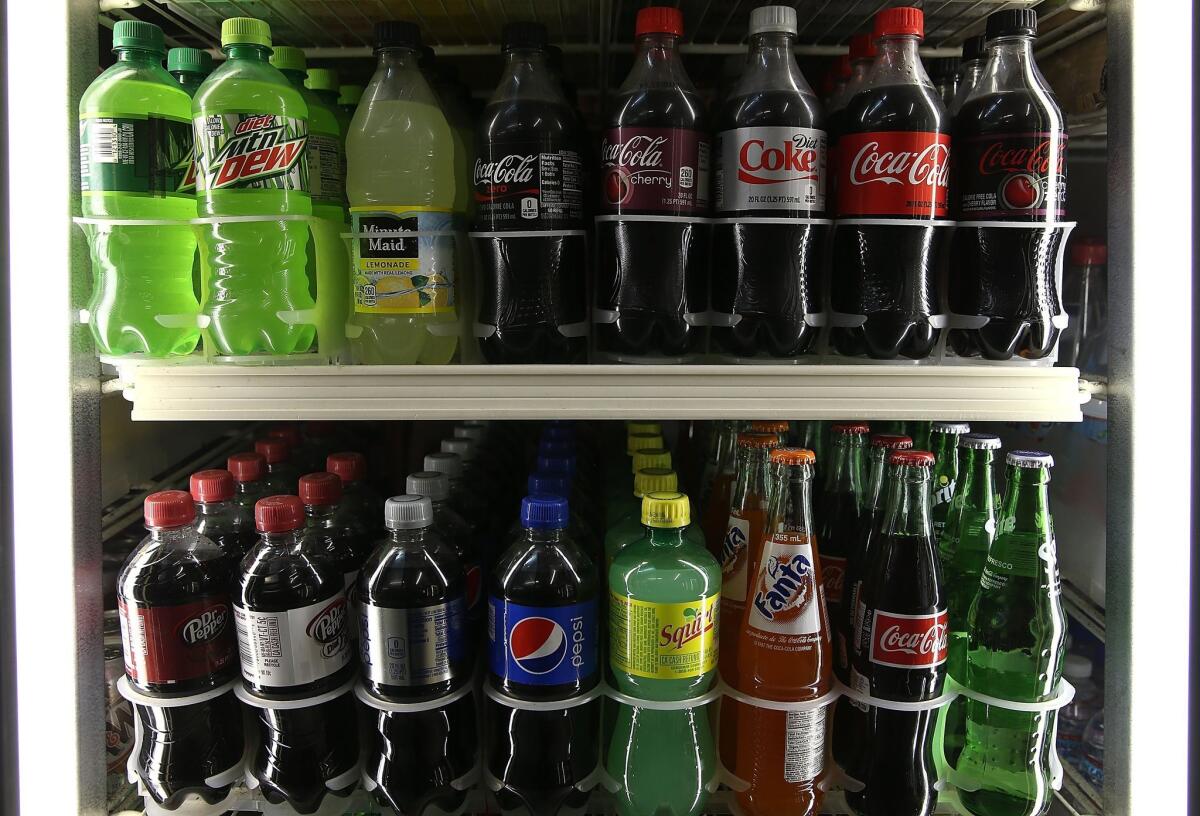Readers React: What should be the recommended daily ‘added sugar’ intake? Zero.

Bottles of soda are displayed at a convenience store in San Francisco. The Food and Drug Administration wants to include information about added sugar on food labels.
- Share via
To the editor: Thank you for the thoughtful editorial on the conundrum of “added sugar” and how it applies to high-sugar “natural” foods such as fruit juice. The death, illness and economic loss caused by our nation’s refined carbohydrate addiction is staggering. (“Sugar is a problem, but are proposed new labels a solution?,” editorial, Aug. 12)
A short time ago, in my dentist’s office, I saw a tall container of straight-glucose candy sitting on the customer counter. The dental assistant did not understand my remark about it being “good for business.”
The feds should set the “recommended” added-sugar level at the correct point: zero.
David Weaver, San Juan Capistrano
..
To the editor: Adorned with a “health halo,” fruit juices pose a unique challenge when it comes to labeling.
Foods — mostly fruits and dairy products — with naturally occurring sugars generally also contain generous amounts of fiber, vitamins and minerals. The sheer bulk of those foods means they are slowly digested. However, the naturally occurring sugars in fruit juice — without
all the fiber — are little different from added sugars and offer the same number of calories, gram for gram.
But that isn’t a reason to do away with a daily value for sugars altogether. Instead, the nutrition facts panel could state “added sugars/juice sugars,” which would prevent sending the message that the sugar in fruit juice doesn’t count while the sugar in a soft drink does.
Furthermore, labels would be far more understandable if they stated the amount of added and juice sugars in terms of teaspoons as well as grams.
Jim O’Hara, Washington
The writer is director of health promotion policy at the Center for Science in the Public Interest.
..
To the editor: I sometimes feel like I need a doctorate to read the nutrition label.
Here’s my thought: What if design- or user- experience students at a number of design schools got the chance to propose a new way to communicate nutrition? Maybe they could use charts and color to make the labels easier to understand. What if they could create a visual hierarchy that helps a consumer see the most important aspects of nutrition first?
I personally think this could be done. What we have today is hardly the most productive label.
I understand that the federal government may ignore this, but I still think it could be worth a shot.
Hakan Sjoo, Boston
Follow the Opinion section on Twitter @latimesopinion and Facebook
More to Read
A cure for the common opinion
Get thought-provoking perspectives with our weekly newsletter.
You may occasionally receive promotional content from the Los Angeles Times.







